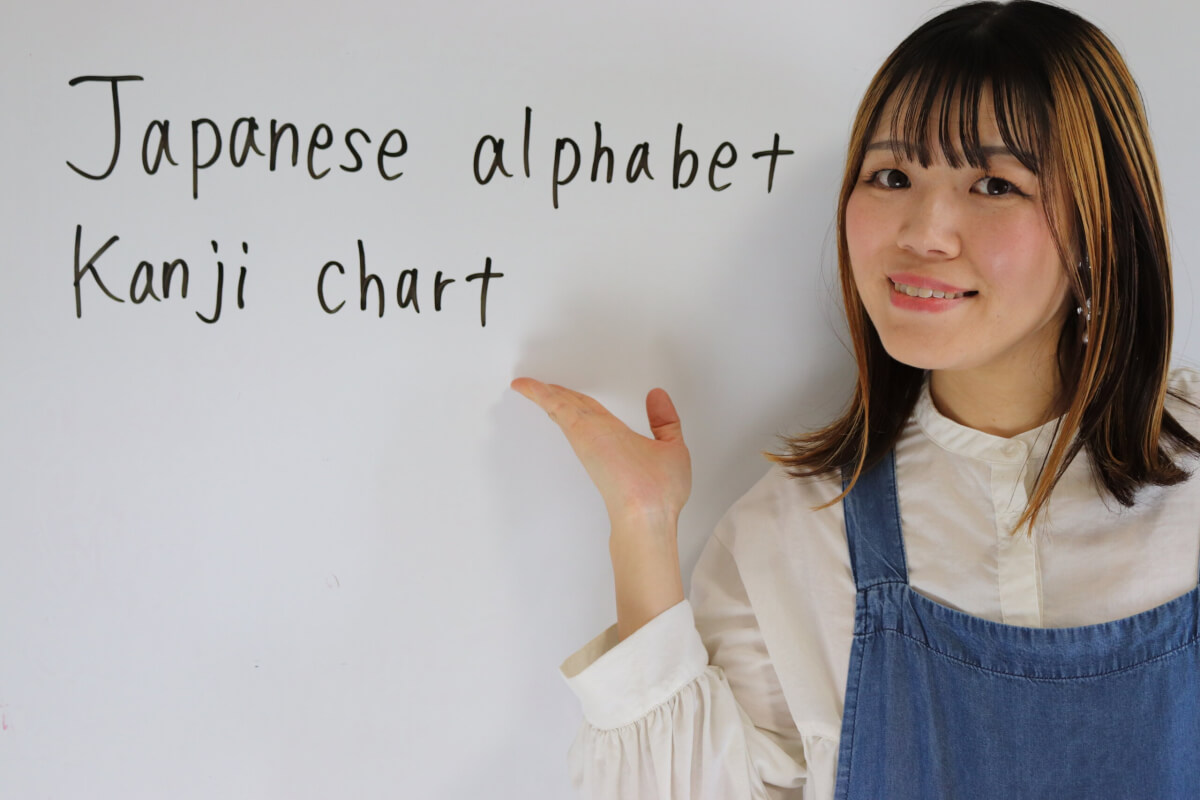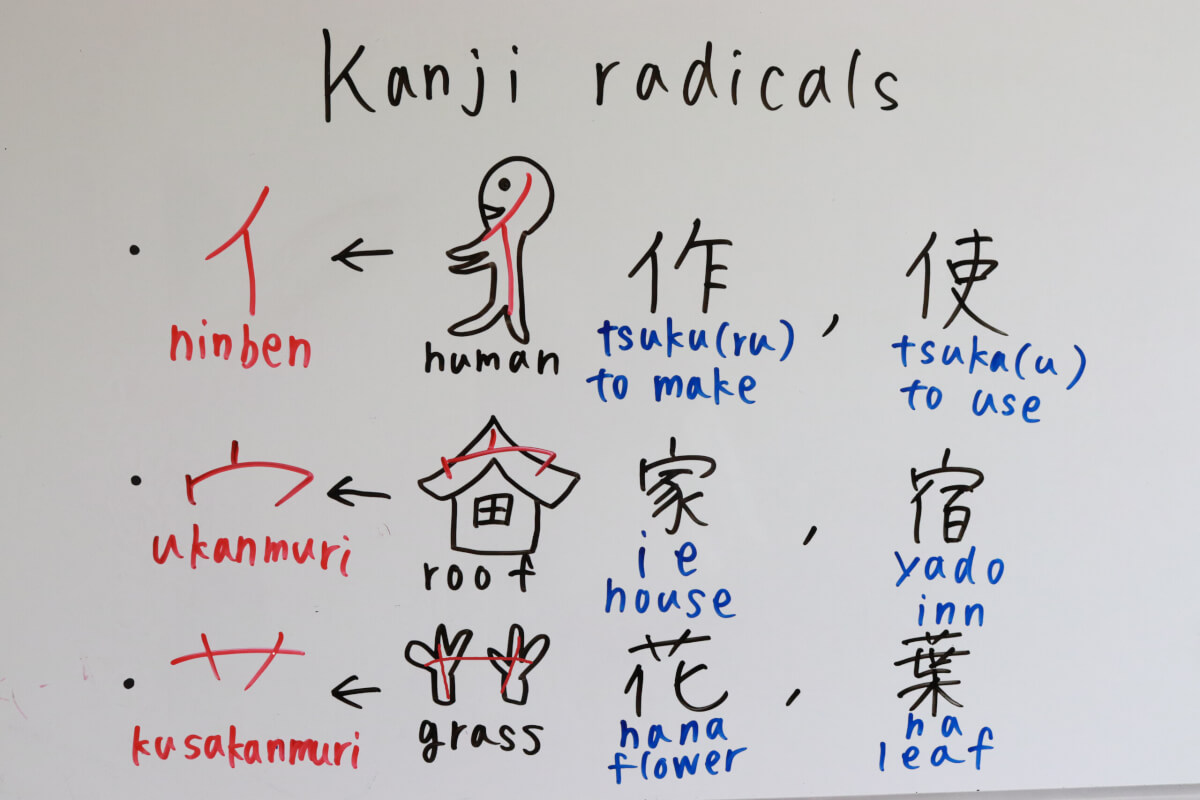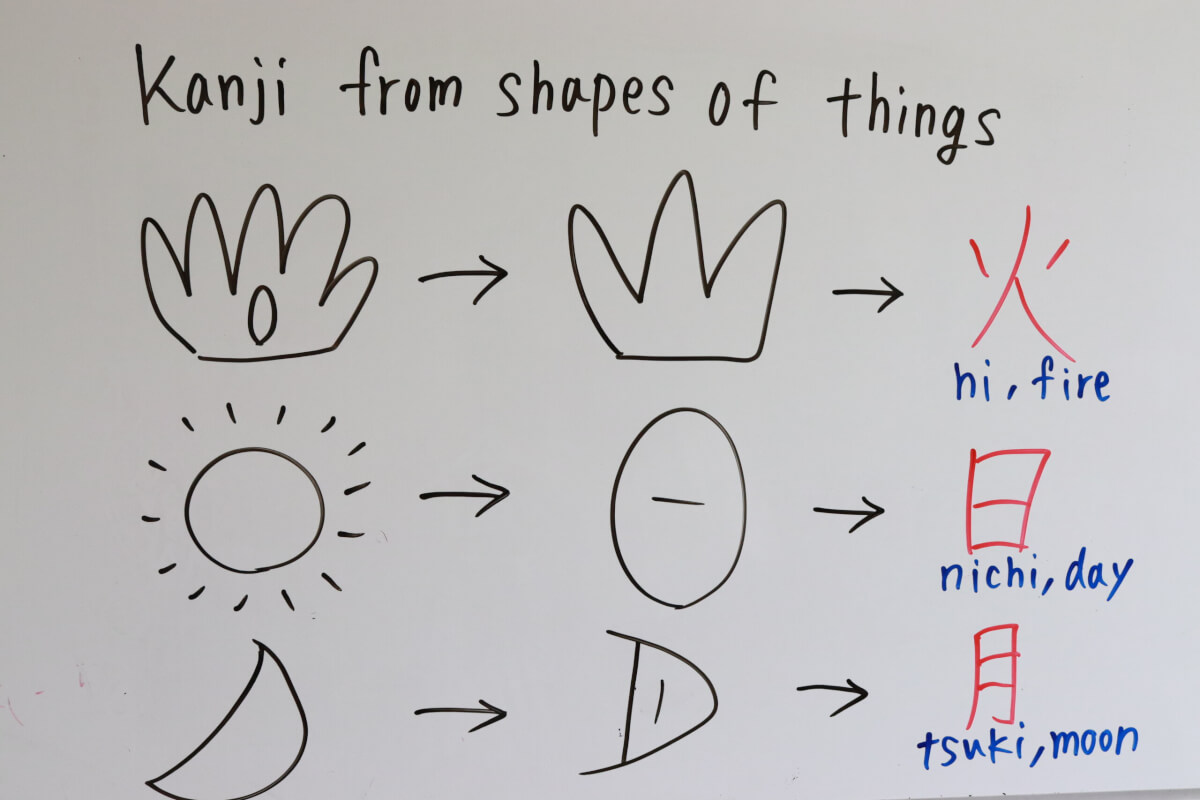- Release Date:
Japanese alphabet Kanji chart

Kanji is essential for studying Japanese. Studying Kanji is not easy, but we encourage you to make progress in your study even if it is just one Kanji a day to increase your Japanese vocabulary.
This article presents a table of kanji characters. Please use it for your self-study.
Basic 80 Kanji alphabet chart
Here is a table of 80 basic kanji with the readings and their meanings at JLPT N5(the easiest level) basic kanji.
| 一 /ICHI/ "one" | 二 /NI/ "two" | 三 /SAN/ "three" | 四 /SHI, YON/ "four" | 五 /GO/ "five" |
| 六 /ROKU/ "six" | 七 /NANA, SHICHI/ "seven" | 八 /HACHI/ "eight" | 九 /KYUU/ "nine" | 十 /JUU/ "ten" |
| 百 /HYAKU/ "hundred" | 千 /SEN/ "thousand" | 万 /MAN/ "ten thousand" | 人 /HITO, JIN/ "people" | 子 /KO/ "child" |
| 男 /OTOKO/ "man" | 女 /ON-NA/ "woman" | 父 /CHICHI/ "father" | 母 /HAHA/ "mother" | 時 /JI, TOKI/ "time, hour" |
| 分 /FUN, PUN/ "minute" | 秒 /BYOU/ "second" | 朝 /ASA/ "morning" | 昼 /HIRU/ "noon" | 夜 /YORU/ "night" |
| 今 /IMA/ "now" | 体 /KARADA/ "body" | 口 /KUCHI/ "mouth" | 目 /ME/ "eye" | 耳 /MIMI/ "ear" |
| 手 /TE/ "hand" | 足 /ASHI/ "foot" | 大 /DAI, OO(KII)/ "big" | 中 /CHUU, NAKA/ "middle" | 小 /SHOU, CHII(SAI)/ "small" |
| 見 /KEN, MI(RU)/ "to see" | 立 /TA(TSU)/ "to stand up" | 書 /SHO, KA(KU)/ "to write" | 読 /DOKU, YO(MU)/ "to read" | 来 /KU(RU), RAI/ "to come" |
| 買 /KA(U), BAI/ "to buy" | 飲 /NO(MU), IN/ "to drink" | 聞 /KI(KU), BUN/ "to listen" | 出 /DE(RU), SHUTSU/ "to go out" | 入 /HAI(RU), NYUU/ "to enter" |
| 行 /KOU, GYOU/ "to go" | 言 /I(U), GEN/ "to say" | 学 /MANA(BU), GAKU/ "to study" | 休 /YASU(MU), KYUU/ "to rest" | 食 /TA(BERU), SHOKU/ "to eat" |
| 白 /SHIRO, HAKU/ "white" | 長 /NAGA(I), CHOU/ "long" | 高 /TAKA(I), KOU/ "high, expensive" | 安 /YASU(I), AN/ "cheap" | 新 /ATARA(SHII), SHIN/ "new" |
| 古 /FURU(I), KO/ "old" | 多 /OO(I), TA/ "many" | 少 /SUKU(NAI), SHOU/ "a few/little" | 月 /GETSU, GATSU, TSUKI/ "moon, month" | 火 /KA, HI/ "fire, Tuesday" |
| 水 /SUI, MIZU/ "water, Wednesday" | 木 /MOKU, KI/ "tree, Thursday" | 金 /KIN, KANE/ "gold, Friday" | 土 /DO, TSUCHI/ "soil, Saturday" | 日 /NICHI, JITSU, HI/ "day, Sunday" |
| 曜 /YO-U/ "days of the week" | 年 /NEN, TOSHI/ "year" | 週 /SHUU/ "week" | 何 /NANI, NAN/ "what" | 上 /UE, JOU, KAMI/ "up" |
| 下 /SHITA, KA, GE/ "down" | 右 /MIGI, U/ "right" | 左 /HIDARI, SA/ "left" | 東 /HIGASHI, TOU/ "east" | 西 /NISHI, SEI/ "west" |
| 南 /NAN, MINAMI/ "south" | 北 /HOKU, KITA/ "north" | 前 /ZEN, MAE/ "before, in front of" | 先 /SEN, SAKI/ "prior" | 外 /GAI, SOTO, HAZU(SU)/ "outside" |
Need example sentences?
When you study Kanji, learn them with example sentences just as you do when learning vocabulary in your native language or other languages.
Example sentences using these kanji are available in our ebook "Power Up Your Japanese". There are 100 kanji with their readings, meanings, idioms, and example sentences. You can also study conversation, vocabulary, and grammar and so on.
How can I memorize kanji?
I also teach Japanese on social networking sites, and I am often asked, "How can I learn Kanji easily?" It is one of the TOP 3 questions. I always answer, albeit realistically, "There is no magic that says you can learn Kanji fast."
You just have to practice writing them. When you learned grammar and vocabulary in your native language at school when you were a child, were you able to memorize them quickly? Unfortunately, there is no such magic that you can memorize only Japanese Kanji characters quickly.
The first way to memorize Kanji is to memorize its form. At that time, be sure to check the reading, pronunciation, and stroke order as well. Then, practice writing the Kanji on your notebook or tablet.
Compositions of each kanji
When studying kanji, it is easier to study if you know the structure of kanji.
Kanji radicals

Basically, kanji with many strokes have a "radical". Then, kanji with different meanings are combined in different parts to form a single kanji.
Shape of things

Many of Kanji came from the shape of objects. This is more common with the simpler kanji listed above, so if you are studying Kanji for the first time, please check the shapes too.
How to write kanji beautifully
I think it is the same with other languages, but Japanese characters give a good impression to others when they are beautifully written. Many Japanese companies still require you to write your resume by hand. This is an old custom, though.
To write Japanese characters beautifully, stroke order is very important. Also, straight lines should be written in a straight line, and there are also rules such as straight lines, "hane" and "tome", etc. This is also one of the things I would like you to learn.
How many kanji do Japanese people know?
There are 2,136 kanji characters in common use alone. However, not all of them are known. Moreover, there are so many Japanese who are not good at it.
This is roughly equal to the number of kanji learned by junior high school graduation.
Everyone doesn't need to know all the common used Kanji. If you want to use them in your work, it is better to memorize common use Kanji, but if you want to learn them as a hobby, you don't need so many Kanji. Study Kanji well according to your own purpose.
